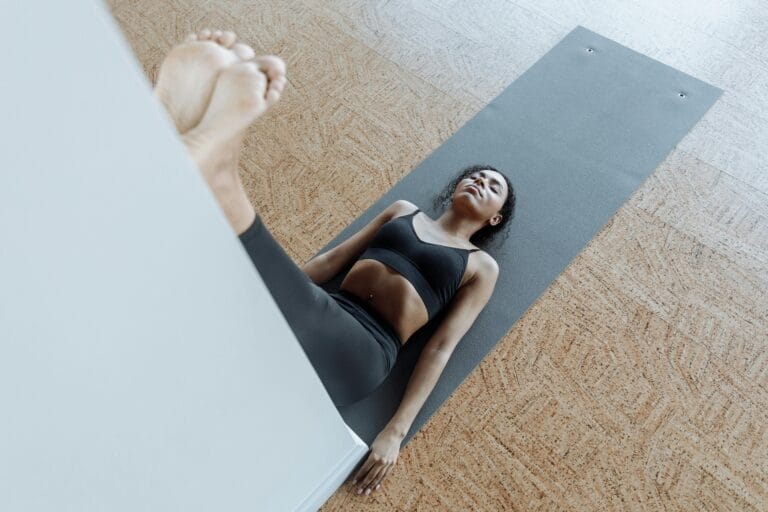FREE SHIPPING OVER $50
Biceps Breakthrough: 5 Shocking Reasons Your Arms Aren’t Growing (And How to Fix It!)
You hit the gym, you train hard, and you probably spend a good chunk of that time curling. After all, big, well-defined biceps are a hallmark of strength and fitness. So, why do your arms feel like they’re stuck in neutral? You’re doing the work, but those coveted peaks just aren’t materializing. It’s frustrating, right? You might even be thinking your biceps simply won’t grow.
Well, get ready for a Biceps Breakthrough! The truth is, your arms aren’t growing not because of genetics (mostly), but because of some common, often surprising, missteps in your training and recovery. These are the shocking reasons many lifters struggle to build the biceps they desire, and once you identify them, you’ll know exactly how to fix it!
Understanding Biceps Growth: More Than Just Curling

For your biceps to grow, you need to provide sufficient stimulus, followed by adequate recovery and proper nutrition.
- Progressive Overload: This is the golden rule. To make muscles grow, you must consistently challenge them with more resistance, reps, sets, or time under tension over time.
- Muscle Damage: Training causes microscopic tears in muscle fibers.
- Metabolic Stress: The “pump” and burn you feel from sustained effort.
- Recovery: Your muscles don’t grow in the gym; they grow when you’re resting and repairing.
- Nutrition: Providing the building blocks (protein) and energy (carbohydrates, fats) for repair and growth.
5 Reasons Your Arms Aren’t Growing
If your arms aren’t growing despite your efforts, one of these 5 shocking reasons might be holding you back. Identify the issue, and you’re already halfway to solving it!
1. You’re Relying Too Much on Momentum (Cheating Your Reps)
- The Shocking Reason: This is perhaps the most common and overlooked reason your biceps aren’t growing. You grab a heavy dumbbell, start to curl, and then your whole body swings forward to help lift the weight. You’re using your back and shoulders, turning a biceps curl into a messy full-body movement. This looks impressive to some, but it dramatically reduces the tension on your actual biceps, robbing them of the stimulus they need to grow.
- Why it sabotages growth: When you swing, your biceps do less work. They’re briefly contracting at the top, but they aren’t forced to control the weight through the full range of motion or experience consistent tension. This means less muscle damage and less metabolic stress – two key drivers of biceps growth. You think you’re working hard, but your biceps are barely being challenged.
- How to Fix It:
- Lower the Weight: Ego aside, use a weight you can control with strict form. Focus on feeling the biceps do the work.
- Stand with Your Back Against a Wall: This eliminates the ability to swing your torso.
- Focus on the Negative: Slowly lower the weight down (eccentric phase) for 2-3 seconds. This creates more muscle damage and forces your biceps to control the movement.
- Try Preacher Curls or Cable Curls: These movements often naturally restrict momentum, forcing stricter form.
2. You’re Neglecting Progressive Overload for Your Biceps
- The Shocking Reason: You’ve been doing 3 sets of 10 reps with the same weight on your biceps curls for months (or even years). You’re consistent, which is great, but consistency without progression equals stagnation. Your biceps have adapted to that load, and they no longer have a reason to grow bigger or stronger.
- Why it sabotages growth: Muscles need to be challenged beyond their current capacity to grow. If you’re not progressively making your biceps workouts harder, you’re not providing the necessary stimulus for adaptation and hypertrophy. This applies to every muscle group, but it’s often overlooked with biceps because people get comfortable with a certain weight.
- How to Fix It:
- Gradually Increase Weight: Once you can hit your target reps with good form, increase the weight slightly.
- Increase Reps/Sets: If increasing weight isn’t an option yet, try adding a few more reps or an extra set.
- Decrease Rest Time: Shorter rest periods can increase metabolic stress.
- Increase Time Under Tension (TUT): Slow down your reps, especially the eccentric (lowering) phase, to keep the muscle working longer.
- Try Different Curl Variations: Don’t just stick to dumbbell curls. Include barbell curls, hammer curls, concentration curls, cable curls, and incline curls to hit the biceps from different angles and challenge them in new ways.
3. You’re Over-Training Your Biceps (or Under-Recovering)
- The Shocking Reason: You love curling so much that you hit your biceps hard every single day, or maybe multiple times a week, with high volume. You believe more is better, but your arms aren’t growing because they aren’t getting enough time to recover and repair.
- Why it sabotages growth: Muscle growth doesn’t happen during your workout; it happens after your workout, when your body repairs the micro-tears you created. If you constantly break down muscle tissue without giving it sufficient rest, nutrition, and sleep, you’re preventing that crucial repair and growth process. This can lead to overtraining, which manifests as plateaus, persistent soreness, fatigue, and even increased injury risk.
- How to Fix It:
- Allow for Rest: Train biceps directly 1-2 times per week. If you’re also doing back exercises that heavily involve biceps (like rows and pull-ups), factor that into your recovery.
- Prioritize Sleep: Aim for 7-9 hours of quality sleep every night. Sleep is when your body releases most of its growth hormone and performs critical repair functions.
- Optimize Nutrition: Ensure you’re eating enough calories to support growth and getting plenty of protein (around 0.7-1 gram per pound of body weight) for muscle repair, along with adequate carbohydrates for energy and recovery.
4. You’re Neglecting Your Triceps (and Overall Arm Proportions)
- The Shocking Reason: You’re so focused on your biceps that you’ve forgotten about the other two-thirds of your upper arm: the triceps! A big, impressive arm is about overall circumference, and the triceps are a significantly larger muscle group than the biceps. Ignoring them means your arms aren’t growing to their full potential.
- Why it sabotages growth: While not directly about biceps growth, neglecting your triceps gives your arms a disproportionate and smaller overall appearance. Many lifters focus heavily on the “show” muscles (like biceps and chest) while neglecting the “go” muscles (like triceps and back), leading to imbalances and hindering overall arm development.
- How to Fix It:
- Give Triceps Equal Attention: Include dedicated triceps exercises in your routine, focusing on compound movements like close-grip bench presses, overhead extensions, and pushdowns.
- Aim for Balance: For every biceps exercise, consider doing a triceps exercise to ensure balanced development and avoid muscle imbalances that could lead to injury.
- Think “Arm Day” Not Just “Biceps Day”: Structure your workouts to give your entire arm the attention it needs.
5. Your Mind-Muscle Connection is Missing
- The Shocking Reason: You’re just moving the weight from point A to point B, going through the motions without truly feeling your biceps work. This lack of focus on the muscle itself means your brain isn’t effectively recruiting all the muscle fibers, and you’re likely letting other muscles take over.
- Why it sabotages growth: The mind-muscle connection is about consciously contracting the target muscle throughout the entire range of motion. Without it, you might be lifting heavy weights, but the tension isn’t optimally directed to your biceps, leading to inefficient training and suboptimal gains.
- How to Fix It:
- Slow Down Your Reps: Take your time with each repetition, especially on the eccentric (lowering) phase.
- Squeeze at the Top: At the peak of the contraction, consciously squeeze your biceps hard for a second.
- Lighten the Load: Temporarily use a lighter weight if needed, so you can truly focus on feeling the biceps contract and extend.
- Pre-Exhaustion: Sometimes, doing an isolation exercise (like concentration curls) before a compound one (like barbell curls) can help you “feel” the muscle more.
Final Thoughts: Putting It All Together for Real Gains!
You’ve just uncovered the 5 shocking reasons why your arms aren’t growing, and now you have the tools for how to fix it! This isn’t just about doing more curls; it’s about training smarter, recovering better, and truly understanding what makes your biceps respond.
By addressing issues like using too much momentum, neglecting progressive overload, overtraining, ignoring your triceps, and lacking that crucial mind-muscle connection, you’re setting yourself up for unprecedented biceps growth. Remember, consistency and attention to detail are your best friends in the gym.
Related Articles
- Workout Saboteurs: 10 Popular Exercises That WASTE Your Time (And 10 Powerful Moves For Real Gains!)
- Rise & Shred: Your 30-Minute Morning Bodyweight Workout to Torch Calories (Before the Heat Hits!)
- 6 Weeks to August Abs: The Exact Program to Carve Your Core & Get That Summer Six-Pack FAST!
- Stop Guessing Your Plank Routine! PTs Share the Exact Weekly Plan for Core Strength & Flat Abs
- Unleash Your Inner Athlete: This Quick 20-Minute Bodyweight Hack Replaces an Hour of Gym GRIND



